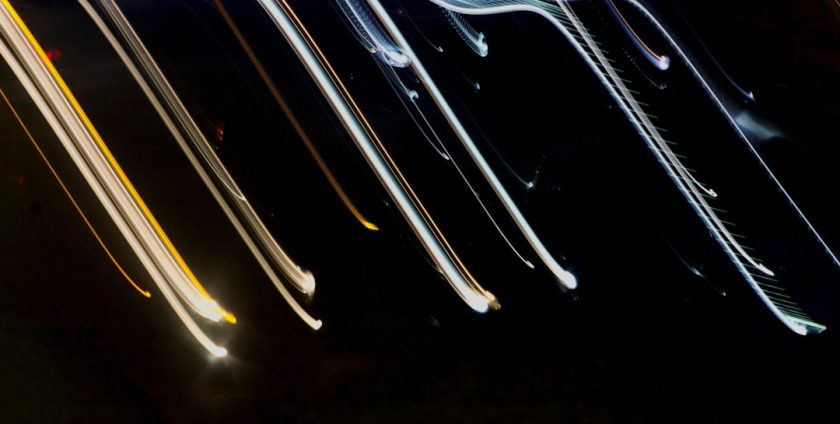
- By: admin
- Category: Commercial Floor Cleaning Machines
- 0 comment
Streaks on surfaces can be a significant concern for contract cleaners, building managers, and facility managers alike. These unsightly marks not only detract from the overall appearance of a space but can also indicate underlying issues with cleaning techniques or products. Understanding the root causes of streaks is essential for developing effective cleaning strategies that ensure a pristine finish.
One of the primary culprits behind streaks is the use of inappropriate cleaning solutions. Many commercial cleaners contain surfactants that, while effective at breaking down dirt and grime, can leave behind a residue if not properly rinsed or wiped away. Additionally, the quality of water used in the cleaning process can play a pivotal role; hard water, for instance, can leave mineral deposits that manifest as streaks on glass and polished surfaces.
Environmental factors, such as humidity and temperature, can also affect how cleaning products dry, leading to uneven finishes that are prone to streaking. Please feel free to get in touch with us through our Contact Us page.
Summary
- Streaks on surfaces are often caused by improper cleaning techniques, low-quality products, or hard water deposits.
- Using high-quality tools and materials is crucial for achieving a streak-free finish, including microfiber cloths, squeegees, and professional-grade cleaning solutions.
- Proper technique involves using overlapping strokes, working in small sections, and ensuring the surface is properly prepped and cleaned before applying the product.
- To ensure a flawless finish, it’s important to allow the surface to air dry or use a clean, dry cloth to gently buff away any remaining moisture or residue.
- Dealing with stubborn streaks and residues may require re-cleaning the surface with a different product, using a vinegar solution for hard water deposits, or seeking professional advice for specific surfaces.
Choosing the Right Tools and Materials: The Importance of Quality Products
Selecting the right tools and materials is crucial in the quest for streak-free surfaces. High-quality cleaning products are designed to work effectively with specific surfaces and types of dirt, ensuring that they not only clean but also leave behind a flawless finish. For instance, using a glass cleaner formulated with ammonia can help to cut through grease and grime without leaving streaks, while a pH-neutral cleaner is ideal for sensitive surfaces like marble or granite.
Equally important is the choice of applicators. Microfibre cloths are often recommended for their ability to trap dirt and absorb moisture without scratching surfaces. In contrast, traditional cotton cloths may leave lint behind, contributing to a streaky appearance.
Furthermore, using the right tools for the job—such as squeegees for windows or specialised pads for floors—can make a significant difference in achieving a professional finish. Investing in quality products not only enhances cleaning efficiency but also reflects positively on the professionalism of your cleaning service.
Proper Technique: Tips for Applying and Spreading the Product

Even the best products can fall short if not applied correctly. Proper technique is vital in ensuring that cleaning solutions are spread evenly across surfaces, minimising the risk of streaks. One effective method is to apply cleaning solutions in a systematic manner, working from top to bottom or left to right.
This approach helps to prevent drips and ensures that any excess solution is wiped away before it has a chance to dry and leave marks. When applying products, it’s essential to use the right amount; too much cleaner can lead to residue build-up, while too little may not effectively remove dirt. A light misting of cleaner followed by a thorough wipe with a microfibre cloth often yields the best results.
Additionally, using a circular motion can help to lift dirt without pushing it around, while ensuring that all areas are covered evenly. Training staff on these techniques can significantly improve the quality of cleaning outcomes across various environments.
The Drying Process: How to Ensure a Flawless Finish
The drying process is often overlooked but is critical in achieving a streak-free finish. After cleaning, surfaces should be allowed to dry naturally whenever possible; however, this may not always be practical in high-traffic areas. In such cases, using fans or dehumidifiers can help speed up the drying process and reduce the likelihood of streaks forming due to moisture.
It’s also important to consider the environmental conditions during drying. High humidity levels can cause cleaning solutions to remain wet longer than desired, leading to streaking as they dry unevenly. Conversely, overly dry conditions can cause products to evaporate too quickly, leaving behind residues.
Monitoring these conditions and adjusting cleaning schedules accordingly can help maintain optimal results.
Troubleshooting: Dealing with Stubborn Streaks and Residues
Despite best efforts, stubborn streaks and residues may still occur from time to time. When faced with this challenge, it’s essential to adopt a methodical approach to troubleshooting. First, identify the type of surface and the cleaning product used; this will help determine whether the issue lies with the product itself or the application technique.
For persistent streaks on glass surfaces, a vinegar solution can be an effective remedy. Mixing equal parts vinegar and water creates a natural cleaner that cuts through residues without leaving streaks behind. For other surfaces, consider using a dedicated residue remover designed for specific materials.
It’s also worth revisiting your cleaning technique; sometimes, simply changing the direction in which you wipe or using a different applicator can make all the difference in achieving a flawless finish.
Preventing Future Streaks: Maintenance and Aftercare

Preventing future streaks requires a proactive approach to maintenance and aftercare. Regular cleaning schedules should be established based on foot traffic and environmental factors; high-traffic areas may require more frequent attention to prevent build-up that leads to streaking. Additionally, implementing a routine inspection process can help identify potential issues before they become problematic.
Educating staff on proper aftercare techniques is equally important. For instance, encouraging them to use clean cloths for each surface type can prevent cross-contamination and reduce the risk of streaks caused by residual dirt or cleaning products from previous tasks. Furthermore, providing training on how to recognise when surfaces need additional attention can empower staff to take ownership of their cleaning responsibilities.
Expert Advice: Insights from Professional Cleaners and Detailers
Insights from professional cleaners and detailers can provide valuable guidance in mastering the art of achieving streak-free surfaces. Many experts emphasise the importance of understanding surface materials and their specific cleaning requirements. For example, while glass may require a different approach than stainless steel or polished wood, knowing these nuances can significantly enhance cleaning effectiveness.
Additionally, professionals often recommend investing in ongoing training for cleaning staff. This not only keeps them updated on the latest techniques and products but also fosters a culture of excellence within your team. Engaging with industry forums or attending workshops can provide further insights into best practices and emerging trends in commercial cleaning.
Mastering the Art of Achieving a Perfect, Dry Finish
Achieving a perfect, dry finish free from streaks is an art that requires understanding, technique, and quality products. By recognising the causes of streaks and implementing effective strategies—from choosing the right tools to mastering application techniques—cleaning professionals can elevate their service quality significantly. Incorporating expert advice and maintaining rigorous training standards will further enhance your team’s capabilities, ensuring that every surface shines as it should.
Ultimately, investing time and resources into mastering these elements will not only improve client satisfaction but also solidify your reputation as a leader in commercial and industrial cleaning. FAQ 1. What are common causes of streaks on surfaces?
Streaks are often caused by inappropriate cleaning solutions, poor-quality tools, or environmental factors such as humidity.
2. How can I choose the right cleaning products?
Select products specifically formulated for the surfaces you are cleaning and consider their compatibility with local water quality. 3.
What techniques should I use for applying cleaners?
Apply cleaners systematically from top to bottom or left to right using appropriate amounts and circular motions for even coverage. 4. How can I troubleshoot stubborn streaks?
Identify the surface type and product used; consider using vinegar solutions or dedicated residue removers as remedies.
5. What maintenance practices can prevent future streaks?
Establish regular cleaning schedules based on traffic levels and educate staff on proper aftercare techniques to minimise build-up and cross-contamination.
FAQs
What causes streaks when drying surfaces?
Streaks when drying surfaces are often caused by the presence of minerals or impurities in the water, improper drying techniques, or using the wrong type of cloth or towel.
How can I achieve a perfect, dry finish when cleaning surfaces?
To achieve a perfect, dry finish when cleaning surfaces, it is important to use a clean, lint-free cloth or towel, and to ensure that the surface is thoroughly wiped and dried in a consistent manner.
What are some tips for preventing streaks when drying surfaces?
Some tips for preventing streaks when drying surfaces include using distilled water or a cleaning solution specifically designed for streak-free cleaning, using a microfiber cloth or chamois, and ensuring that the surface is completely dry before finishing.
Are there any specific techniques for achieving a streak-free finish?
Specific techniques for achieving a streak-free finish include using a circular or back-and-forth motion when drying surfaces, working in small sections, and buffing the surface with a dry cloth after initial drying to remove any remaining streaks.
